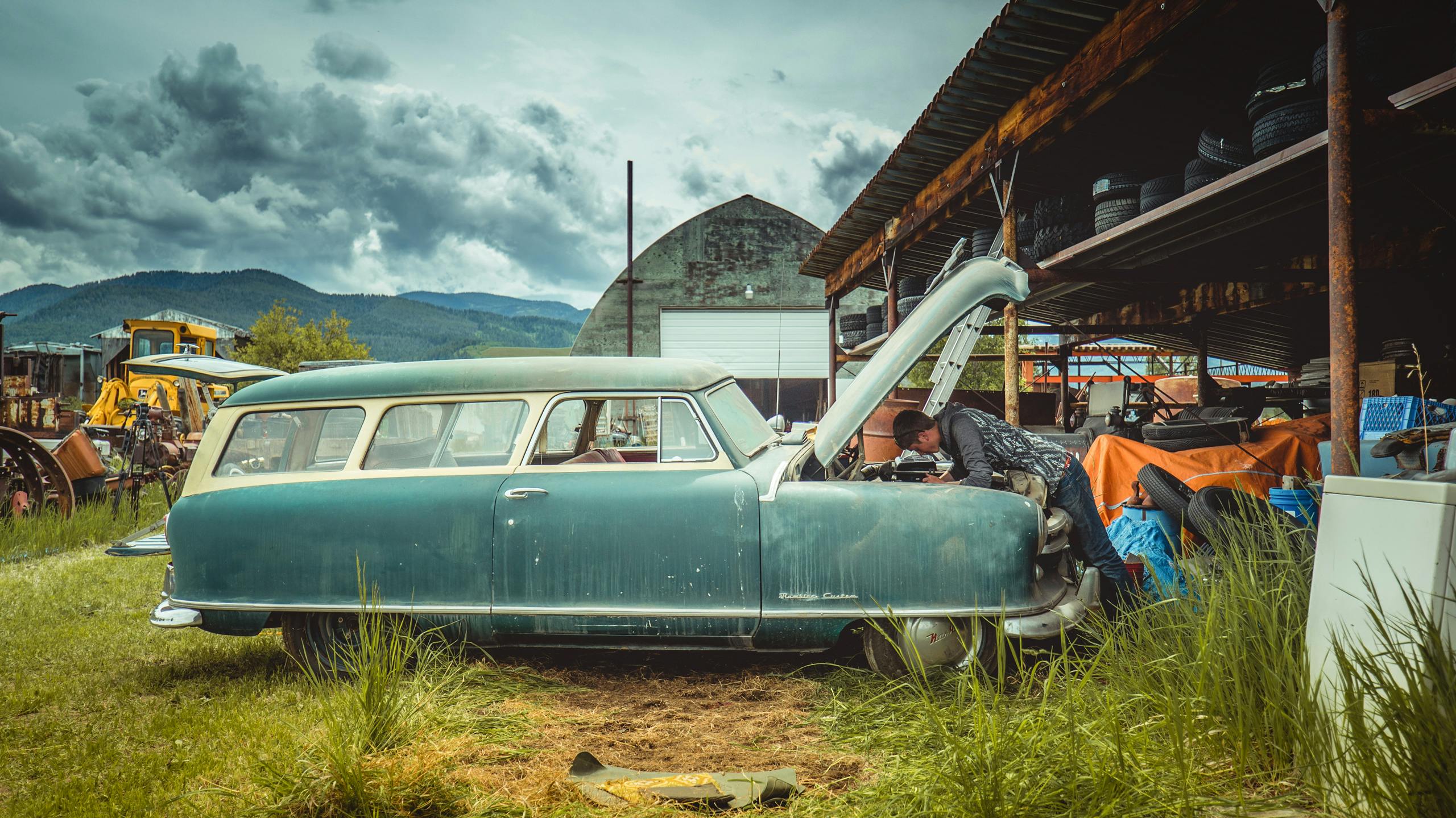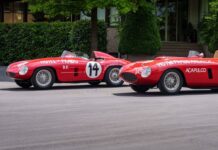In 2016, I got a letter from my insurance company, stating that I needed to get rid of the “debris” around my house.

My best guess is that they were referring to the highly sought-after, single-side-cover VW transaxle from the mid-1970s that was sitting under an overhang. Perhaps they also meant the front end, complete from spindle to spindle, that I removed from a donor car and that currently lay in potentia in my carport, awaiting a full rebuild before being transplanted into the Karmann Ghia. Could they mean the body pan rusting along the side of the house, with a perfectly serviceable torsion housing and trailing arms waiting to be harvested? Or the heated leather seats under a tarp, which I spent three hours removing from a late ’90s Audi at Chesterfield Auto Parts (a salvage yard on the south side of town)? Surely they weren’t referring to the roughly 2.6 dirt bikes, two of which needed only a fresh battery and a carb rebuild. At the risk of boasting, I also have an impressive stock of new and scrap metal—rod, flats, plate, square tubing, pipe, sheetmetal, and a few solid billets—all nicely collated by shape, size, and type of alloy.

On my rides through rural Virginia, I see yards where old appliances, ATVs, furniture, and all kinds of crap are not strewn but obviously arranged in front of the house and carefully mowed around. It looks like a yard sale, but it is not. What is it, then? It is something universal, apparently. Dutch historian Johan Huizinga reports that among the Trobriand Islanders, “foodstuffs are not valued solely on account of their usefulness, but also as a means for parading wealth. Yam-houses are so constructed that one can compute from outside how much they contain… The best fruits are the most conspicuous, and particularly fine specimens are framed, decorated with paint, and hung up outside the yam-stores.”
My house is situated such that my yard wealth is not visible from the street, and I have placed it mostly out of sight of my immediate neighbors (because I am neither a Trobriand Islander nor an ostentatious redneck). I’m not sure what the zoning laws are, but for sure the general vibe here, on the West End of Richmond, is more uptight than it was where I lived previously, on the Southside. There, many people had project cars. While the toddlers and their mothers socialized on the sidewalk, the neighborhood social life of the men took place mostly in the unpaved alleys between streets, where the sheds and garages abutted. Everyone knew who had a sandblaster, who had welding equipment, who had a metal lathe, who was especially good at diagnosing electrical gremlins, and so on. There was a good informal economy of favors done and six-packs delivered. My next-door neighbor was a cop. We absolutely hated each other but regularly found ourselves in this kind of interaction.

In my new neighborhood, the lawns are meticulous, the houses are much farther apart, there are no alleys or sidewalks, and recycling is taken very seriously. An outdoor inventory of used auto parts is not part of that equation. Somehow, I gather, a $40K hybrid SUV getting 31 mpg—and the intercontinental energy and material flows that brought it into being—are more “green” than a ratty-looking old Volkswagen assembled from castoff parts, foraged locally, that gets 32 mpg. There is a certain aesthetic of cleanliness that must be adhered to. Better yet, invisibility. To count as green, those ugly chunks of rusting 1970s steel would need to be removed and recycled: melted down in a coal-fired blast furnace and sent across an ocean to become raw material for, say, an electric car, to be returned to the U.S. on a diesel-powered container ship. Such details are best kept out of mind; the main thing is that this journey accomplishes a moral cleansing of the metal.
My insurance inspector might have also been offended by some items along the side of my garage: A bucket of waste oil, a handful of dead batteries, a cashew container full of used brake fluid, and red plastic cans of gasoline in various flavors (two-stroke mix for the lawn and garden equipment, gas that is too far gone for internal combustion but still useful for starting bonfires, and some fresh, premium stuff). Plus a can of kerosene that I use for cleaning parts. Depending on when he came snooping around, there may have been a yogurt container of half-evaporated epoxy primer, because letting it evaporate and then taking the solid remains to the dump is the prescribed method for disposing of it. Would my insurer prefer that this volatile stuff—filthy and apparently haphazard but in fact carefully tended for use, reuse, alternative use, or disposal—be kept inside the shop, in closer proximity to the welding and grinding sparks?
Nobody wants to live next to a Superfund site; I get that. My point is that our judgments of “responsibility” get clouded with aesthetic considerations that are in turn wrapped up with class-based forms of self-regard and virtue signaling. Zoning laws, as well as the informal norms of bourgeois environmentalism, serve to maintain social demarcations (and with them, wildly divergent property values). They also enforce the planned obsolescence that our economy is based on.

People who work on old cars, whether as enthusiasts or out of necessity, are out of step with this regime. Maybe that’s why we tend to have the secret pride of the dissident: Someone with an alternative frame for making sense of the world, one that allows him to see the value in things that are commonly despised.
Superficially, litter and the rusting carcasses of salvaged cars are both an affront to the eye. But while litter exemplifies that lack of stewardship that is the ethical core of a throwaway society, the visible presence of old cars represents quite the opposite. Yet these are easily conflated under the environmentalist aesthetic, and the result has been to impart a heightened moral status to Americans’ prejudice against the old, now dignified as an expression of civic responsibility. Car people tend to see through that.

Prejudice against the old goes deep in the American psyche. Alexis de Tocqueville reported his conversation with an American sailor in 1831: “I ask him why the vessels of his country are constituted so as not to last for long, and he answers me without hesitation that the art of navigation makes such rapid progress each day, that the most beautiful ship would soon become nearly useless if it lasted beyond a few years.” Here is a striking defense of shoddiness as a natural corollary of the faith in progress.
You don’t have to be a reactionary to see that the idea of “progress” does a lot of mischief in the world. To be skeptical of progress is to have what Michael Oakeshott called a “conservative disposition.” He wasn’t talking about a political ideology. More like an attitude. The conservative, in this sense, doesn’t automatically defer to those who claim to speak for the Future. But neither does he hanker after an imagined past. Rather, he lives more fully in the present: He wants to take care of the stuff that already exists, because he sees the value in it. This is a posture of gratitude and repose in the world as it is, rather than restless pursuit of optimization and novelty. It is a happy place to be. And yes, it tends to require parts cars. Sorry!


Report by Matt Crawford for hagerty.com










